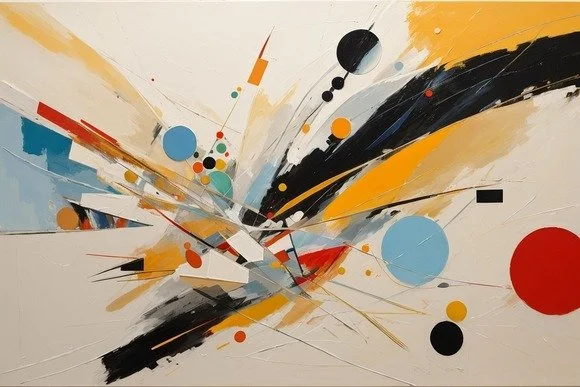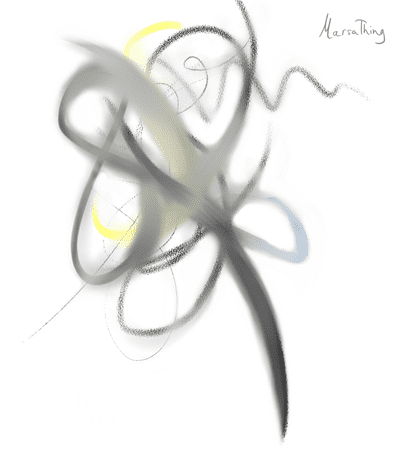Artist meets AI - The future of creativity
I’m an artist that won’t be replaced.
Many believe that AI models like Midjourney are a threat to artists. And honestly? They’re partially correct. When it comes to tasks done with AI in general, they must be handled responsibly – AI will not do everything for you, but it can help you get started or come up with final edits. The same goes for making art, whether it concerns illustrations, songs, written pieces or anything else.
Image 1. AI art by 1tamara2 on Pixabay.
AI is great for remixing content, but not for creating anything inherently unique. You can give it original ideas, but it will either not fully understand your request, or struggle to find real media to base your request off of. If you ask for something generic that already exists, chances are that it will find what you’re looking for and give it a spin of your choosing. AI was never intended to steal someone’s livelihood; its purpose is to make tedious tasks more manageable and speed up the workflow. This is what you should use AI for.
If you leave everything to AI, I can guarantee that it will make mistakes, or at the very least make someone upset along the way. The main problem with AI is that it is not human, no matter how hard it will attempt to imitate one. And because it is not human, it cannot understand the context of the task you’re giving it. A human artist can ask you questions or use their own imagination and reasoning skills to fill out the gaps in your prompt, and make edits throughout their artistic process. Meanwhile an AI model will make an educated guess based on previous input and see how it goes.
I don’t see generative AI as a coworker, but as an office pet, like a Roomba or a Sale-bot. It helps me with little things throughout the day, so that I’d get more stuff done. I know I’m privileged in the sense that my work is not entirely based on making creative, eye-catching visuals or written works – because as a marketer, I do more than that. I analyse data, I do creative writing, I create marketing materials and take part in strategic meetings. My livelihood will not be threatened if I replace one illustration or would-be stock image with an AI-made picture. Chances are, it will just save me both time and money, letting me focus on my other tasks. For an illustrator or a writer, this is not the case – but have you considered that they could be using AI as well?
AI makes art more accessible. It’s cheap, efficient, and you can ask it for a thousand different versions of something in a matter of minutes rather than days. A mute person can still create music with beautiful vocals by taking advantage of an AI singer, instead of searching for suitable vocalists for a one-time commission. A comic artist with a wrist injury can still meet their deadlines by having AI models do part of their drawing progress. You will most likely get the best possible result by giving the AI a ready draft, tell the tool what you want it to do with it, and edit the generated result into perfection. Remember that AI will always use something ready-made, whether it’s from you or from the depths of its database, so someone with the necessary skills and contextual understanding to make something inherently new will still have a great advantage over purely AI-generated work. After all, wouldn’t you rather hire someone who can make prompts, draw, and explain how it’s done?
Image 2. Abstract art made by the author.
Human creativity should never be reduced to data to train AI models. If you attempt to do just that, you will naturally face some kind of backlash. NBC News, among other news sources, have reported of artists suing AI companies for using their work without consent. Artists have also chosen to leave social media platforms the moment they felt their rights were violated, as seen in various public announcements. This is not an issue of “people against machines”. In truth, the issue is about lack of consent, which can be easily resolved through open discussions and forming fair deals between artists and the companies that utilize AI. Some AI companies have implemented opt-out mechanisms for artists, while others only aim to use licensed or public domain images to train their models.
As the World Economic Forum put it, “whether AI becomes a genuine asset or a tool for exploitation depends on the choices we make right now”. AI is here to stay and change work life as we know it, whether we’re passionately rooting for it or watching it evolve with gritted teeth. So, why not make sure that people are using it correctly, considering both its positive and negative effects? Educate people on how to use the tool as a tool – nothing more, nothing less. First impressions make all the difference when it comes to AI adoption in the workplace.
In conclusion, AI models like Midjourney can be a huge help for professional artists and designers. Similarly, Microsoft Copilot is a great asset for office workers, and ChatGPT can provide practical insight for business leaders. It is our mission at AiSkillSet to educate people on how to make the most of these AI tools at their daily work. In a free 30-minute video call, we’ll share real case studies on why AI adoption stalls and how companies have successfully turned things around. Afterwards, you’ll have actionable insights on overcoming these challenges in your organization. To schedule a call, contact us through the link below or send us a message through the live chat in the bottom right corner of your screen!


